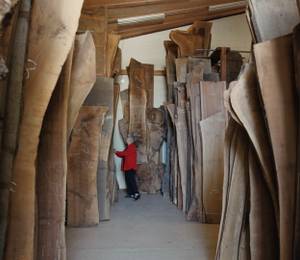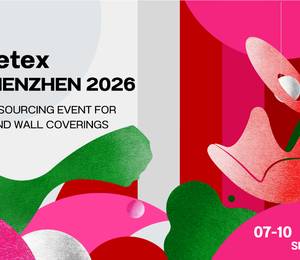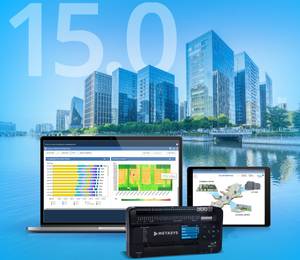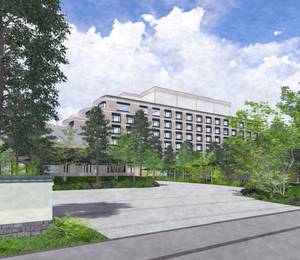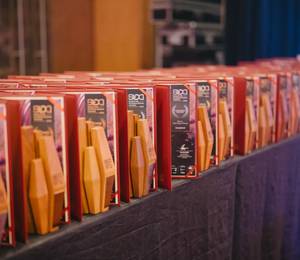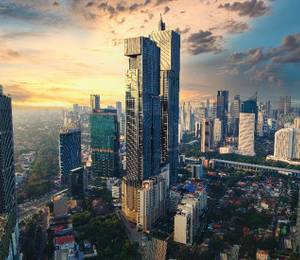Peter Brannan, Asia Regional Practice Leader, Skidmore, Owings & Merrill (SOM) and Nic Medrano, Senior Associate Principal at Skidmore, Owings & Merrill (SOM), Hong Kong tell us about the firm’s strong presence in the Asia Pacific region, its expansion plans, ongoing projects and the impact of digitalization on its practice.
SEAB: SOM has a strong presence in the Asia Pacific region. What factors have contributed to the company’s success?
Peter Brannan: We have a long history in the region – over 30 years working across many different countries, cultures, and contexts. Our work benefits from more than 86 years of in-house knowledge and expertise across architecture, structural engineering, urban planning, and interiors. Since our founding in 1936, SOM has worked with a global perspective. This curiosity and interest in working globally is something we have sustained for decades, and we’re always striving to address the next frontiers of innovation, be it structurally or environmentally driven.
SEAB: What kind of projects have SOM undertaken in the APAC region?
Nic Medrano: We pride ourselves on being truly interdisciplinary, which allows us to work across a broad range of typologies, from master plans, transit-oriented developments, and large scale mixed use developments, to projects at a more personal scale–residential, hospitality, workplace. We have designed civic spaces across the region, from Changi International Airport Terminal 2 in Singapore to Tokyo Midtown in Japan. Currently, our design for One Bangkok, the largest private development in the history of Thailand, is under construction. Our work has transformed cities all over the world, as witnessed with the Burj Khalifa in Dubai, One World Trade Center in New York City, and Jin Mao Tower in Shanghai.
SEAB: Do you have any design strategies for projects in Asia Pacific?
Nic Medrano: Our design process always begins with contextual understanding and a study of local culture and techniques. We want our projects to reflect their place and identity. A unique challenge of working in the Asia Pacific region in particular is that this region is full of maturing, hyper-dense cities. We are often finding ways to enrich and complement urban fabrics, which in many ways, are already vibrant and interconnected.
The region is also on the front lines of climate change. Hundreds of millions of people experience increasingly extreme weather and living conditions every year… therefore our mission must be to confront these issues from a design perspective. Good design requires a deep understanding of the natural systems that shape our environment. More specifically, we envision how our cities can contribute to healing nature rather than taking from it. From “sponge city” concepts, to 15-minute city designs, smart density, advanced modes of transportation, and implementing new design and construction technologies to reduce carbon footprints, these are just a few of many approaches we are taking. Carbon reducing materials like bio-brick, timber and alternative types of sustainable concrete will become essential elements of a sustainable and prosperous future.
SEAB: How have digitalization, climate change and sustainability shaped SOM’s practice in Asia Pacific?
Nic Medrano: We have found that our clients here have an advanced understanding of digitalization tools and emerging technologies, so these partnerships are incredibly rewarding in that we’re constantly moving ideas forward with respect to biophilic design strategies, user-responsive workplaces, and so forth. Climate change and sustainability are driving factors in our project work. Our high performance design team is constantly looking for ways to push the boundaries of what is possible when it comes to advancing local building codes and standards.
SEAB: What challenges do you face working in the APAC region?
Peter Brannan: This is a large, diverse region, and every locale calls for a different process and approach to design. Our ability to work successfully across Asia Pacific is in part due to the longstanding history and knowledge we have of the region, and our interdisciplinary expertise, which allows for flexibility and innovation. Our expansion of the Hong Kong studio will continue to benefit our work in the region. By growing our local team and leadership, we are making a commitment to the region that allows us to work on more projects, explore more ideas, and strengthen our relationships with clients and stakeholders. We also aim to guide governments forward as building codes and local regulations need to adapt to a more sustainable approach to building.
SEAB: Can you tell us about your expansion plans for the APAC region?
Peter Brannan: We are very optimistic about growth in the region – as economies and cities mature, we are seeing many new challenges and opportunities for increased work in healthcare, transportation, and education. Our team is growing to meet these challenges, bringing a broader range of resources, capabilities and knowledge to better serve our clients and the communities we work with.
SEAB: What projects are you currently working on in Asia Pacific?
Peter Brannan: We are working on a wide range of transformative projects across the region; in the Philippines, construction is underway for Aurelia, a luxury residential project, and in the Ayala Triangle, one of the densest mixed use developments in the country. In Thailand, the One City Centre is part of our larger master plan and the One Bangkok tower also recently topped out. In Singapore we are working on Elementum, a bio-pharmaceutical laboratory and we are also completing a series of master plans in Vietnam, as well as here in Hong Kong. We are also excited to be working on a series of yet-to-be-announced large-scale mixed-use and TOD projects that will transform their respective cities in the next few years.
SEAB: What is the future of architecture in Asia Pacific and what innovative design strategies can we see from SOM?
Nic Medrano: SOM is constantly exploring new methods for advancing our design practice. We are researching and testing the applications for a zero-carbon bio brick made with carbon consuming bacteria, and concrete made with algae, to replace traditional building materials such as concrete and steel. Timber construction is slowly making its way into our designs as building codes become more accepting of the material. Our Urban Sequoia research also takes cues from natural processes and ecosystems and proposes “forests’’ of buildings that create a new carbon-removal economy and a resilient future for our cities. Due to the concentration of density in this region, it is a hyperactive and exciting environment to innovate within. From a design standpoint, the future of the Asia Pacific region is sustainable and climate-responsive, experimental, bespoke and technology-driven.

